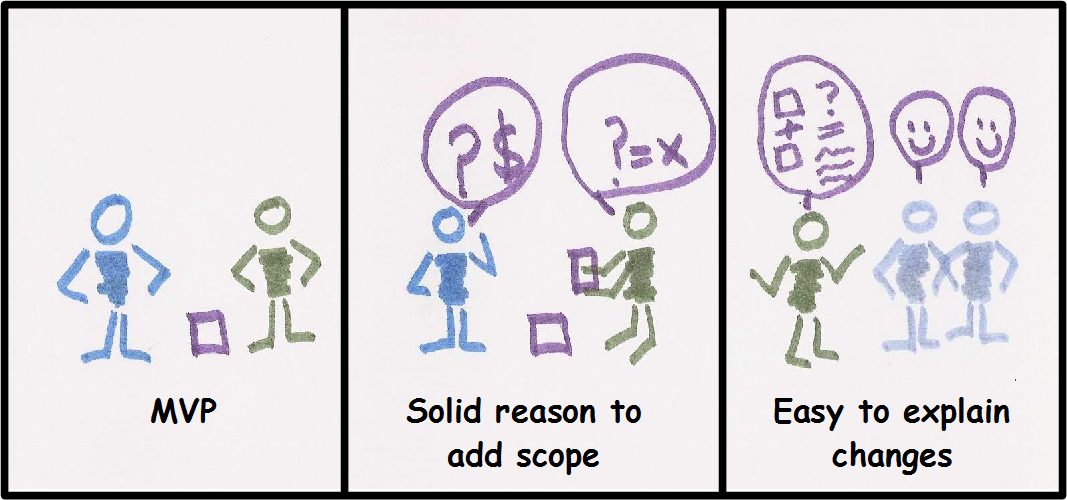Is it better to start with a large scope and reduce it, or start with a small scope and increase it?
Argue Scope Out
 It seems easier to start with the full idea – everything that we want – often this ends up costing more than we have and taking longer than we want.
It seems easier to start with the full idea – everything that we want – often this ends up costing more than we have and taking longer than we want.
So we do more work to come up with options in order to deliver something in the time-frame and for the money we have – so many decisions.
These can be hard to explain to the decision-makers and stakeholders and results in a lot of frustration, unmet expectations and further delays before we even start the work.
Argue Scope In
 Here we start with the Minimum Viable Product, the smallest part of the idea that can provide learning and/or value. If this cannot be done in the time-frame or for the money we have – then stop now.
Here we start with the Minimum Viable Product, the smallest part of the idea that can provide learning and/or value. If this cannot be done in the time-frame or for the money we have – then stop now.
The conversations we have about adding scope to the work are about the solid reasons to add it and about the cost and time-frame impacts. Each piece of scope added is carefully considered before it is agreed to be added.
Any changes to costs and time-frames are much easier to explain to our stakeholders and decision-makers. The conversations are more positive and productive, decisions are clearer and we can get on with doing valuable work more quickly.

Two words: Loss Aversion. 🙂
Thank you for these thoughts Ted.
Wondering if you mean that arguing scope in is helping to avoid loss aversion?
Or do you mean that starting with the whole scope is driven by loss aversion?
Or something else?
Sorry, that’s what I get for trying to be cute.
Starting with a full-fledged set of requirements and features and then having to drop them (aka reduce scope) because of insufficient time, money, etc., hurts a lot due to our cognitive need to avoid loss (even if those features were “wishful thinking” or “nice to haves”). On the other hand, starting as small as possible, finishing it, works well with our cognitive biases.